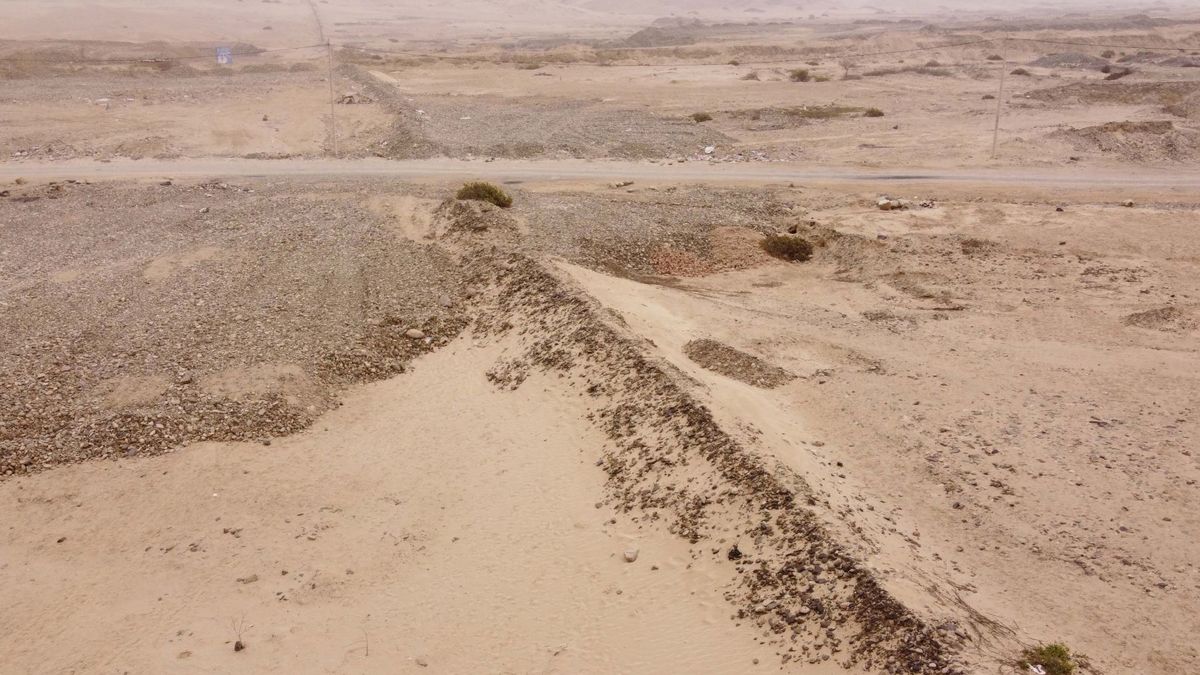1,000-year-old wall in Peru was built to protect against El Nino floods, research suggests
By Tom Metcalfe published 26 June 2023
The research found flood sediments only on the eastern side of a desert wall built almost 1,000 years ago.

We see a bird's-eye view image of the sandy and rocky desert of northern Peru. Running diagonally in the photo is a high stone wall.
The ancient earthen wall runs for 6 miles (10 kilometers) across the desert and two dry river beds near Trujillo in northern Peru. (Image credit: Gabriel Prieto/Huanchaco Archaeological Project)
An ancient desert wall in northern Peru was built to protect precious farmlands and canals from the ravages of El Niño floods, according to new research.
Many archaeologists had suggested that the wall, known as the Muralla La Cumbre and located near Trujillo, was built by the Chimú people to protect their lands from invasions by the Incas, with whom they had a long-standing enmity. But the latest research affirms a theory that the earthen wall, which stretches 6 miles (10 kilometers) across the desert, was built to hold back devastating floods during the wettest phases of northern Peru's weather cycle.
These phases are now known as El Niño — Spanish for "The Boy," a reference to the child Jesus — because they bring heavy rain to the region around Christmastime every few years.

Archaeologists have found distinctive layers of flood sediments only on the east side of the ancient wall. (Image credit: Gabriel Prieto/Huanchaco Archaeological Project)
Although El Niño brings drought to some other parts of the world, it brings heavy rains to Ecuador and northern Peru. El Niño floods are thought to have occurred there for thousands of years, and they would have been a serious danger to the Chimú, Gabriel Prieto, an archaeologist at the University of Florida, told Live Science.
. . .
"The Chimú were the descendants of people who had lived in this region for 10,000 years . . . "
More:
https://www.livescience.com/archaeology/1000-year-old-wall-in-peru-was-built-to-protect-against-el-nino-floods-research-suggests

